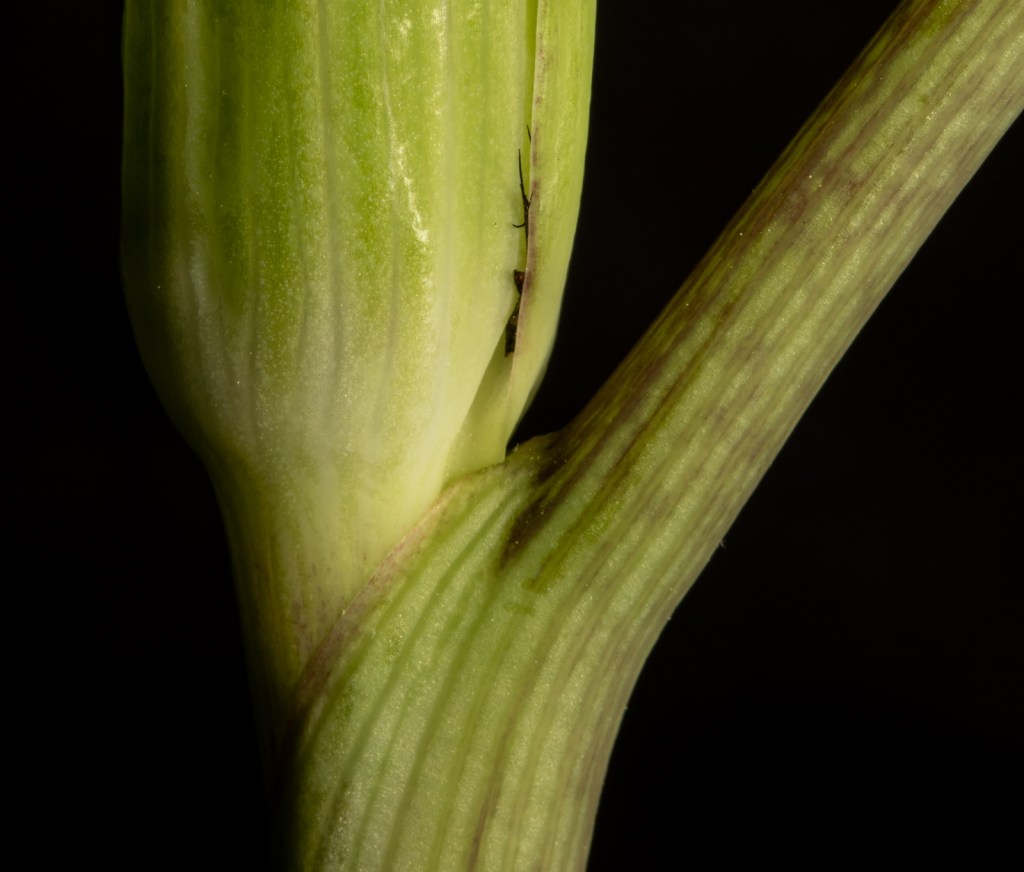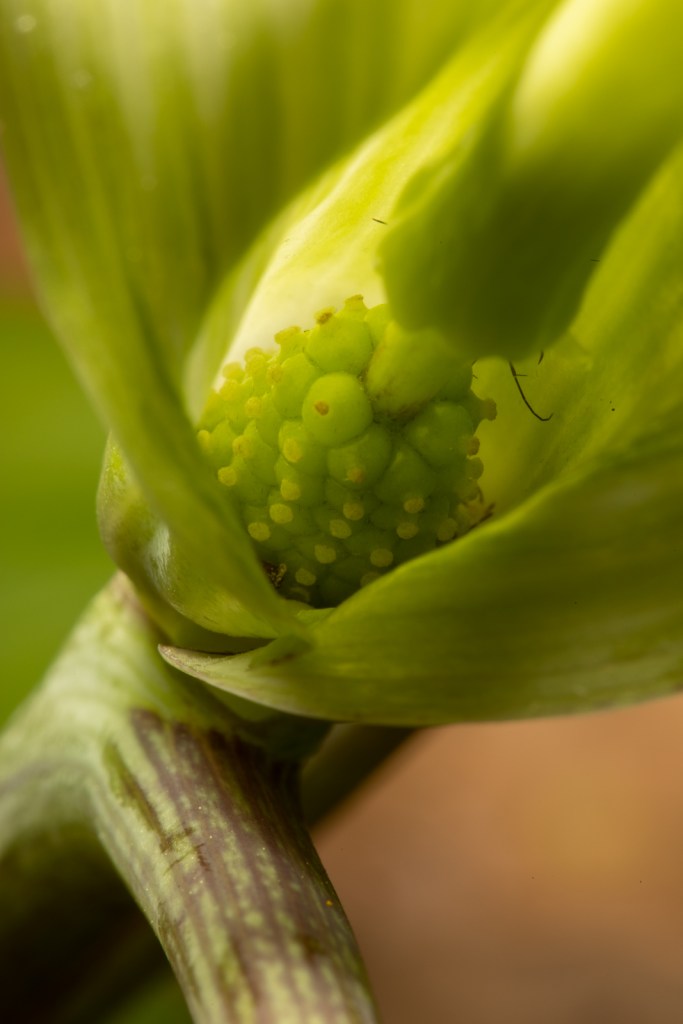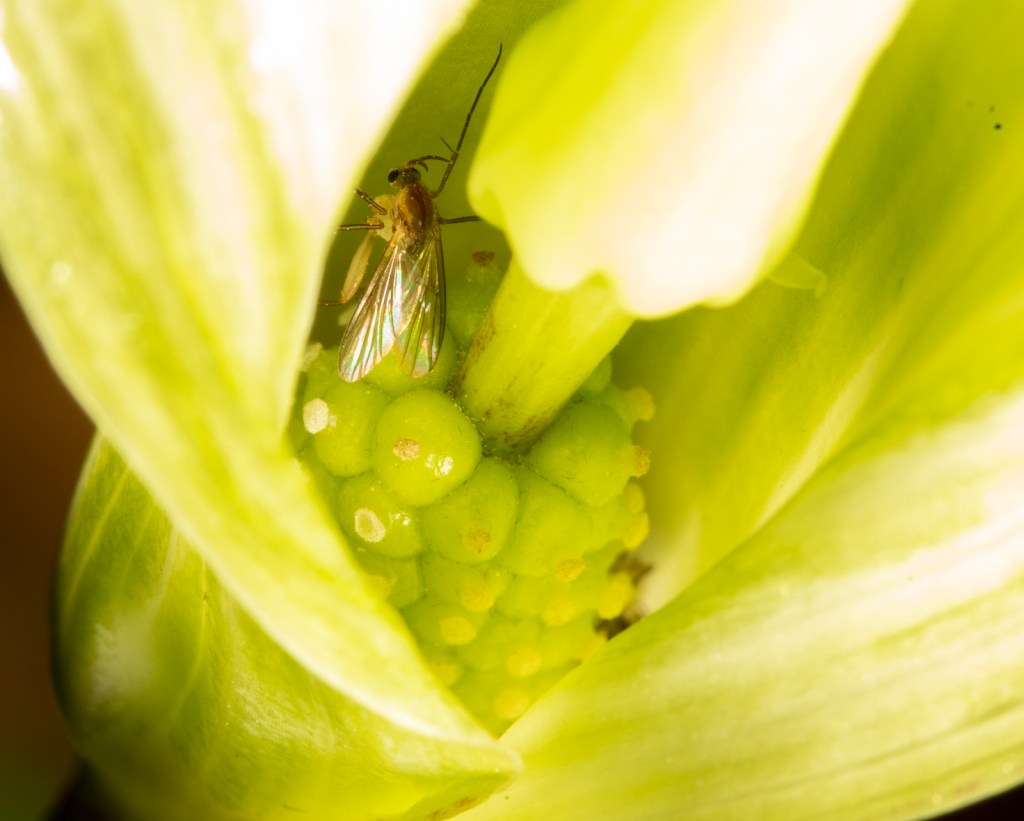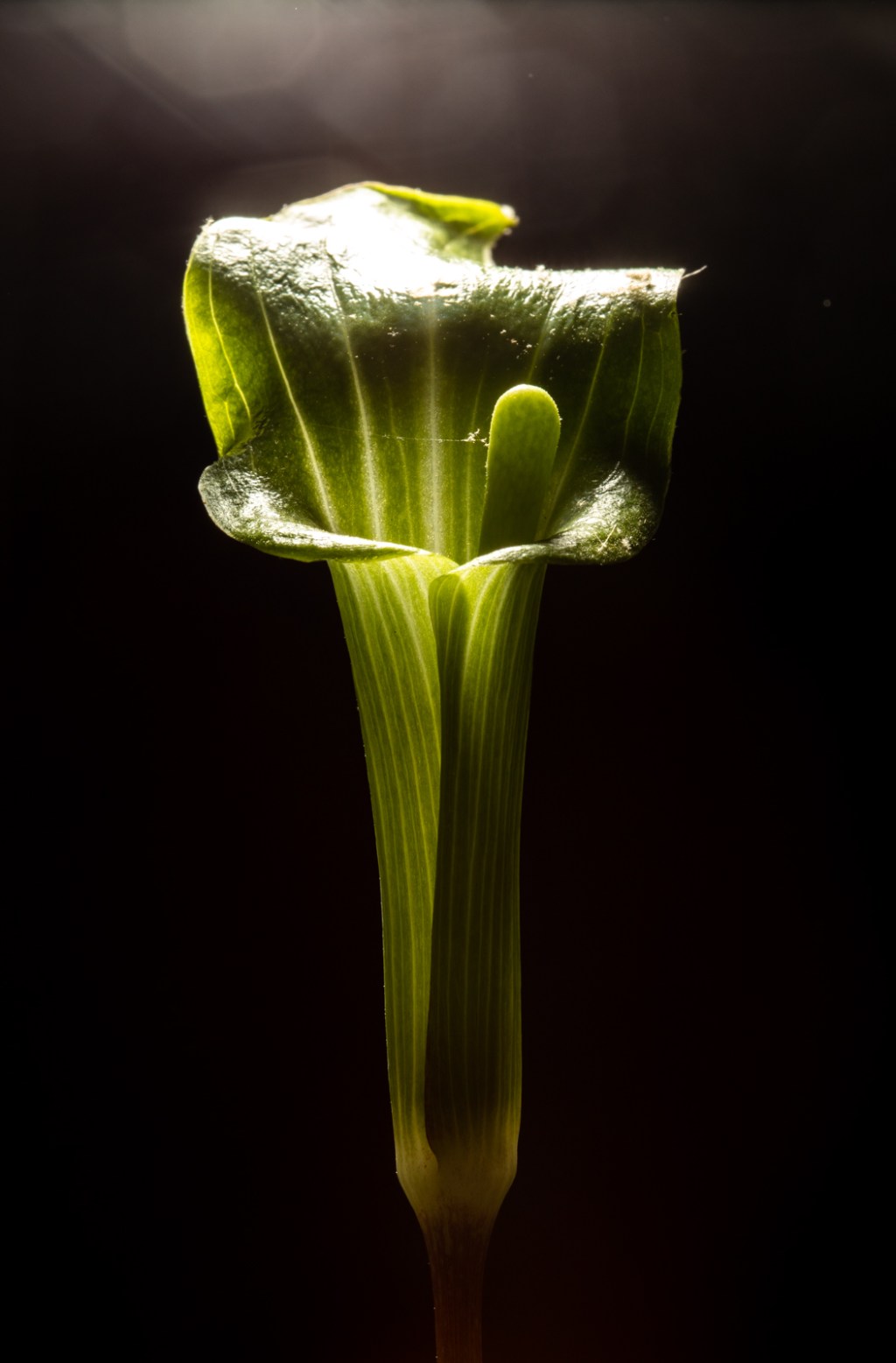The Lord chose to reveal his power and his love through two human faces: the face of his divine Son made man and the face of a creature, a woman, Mary. Women make their contribution to the Church in a way that is properly theirs, by making present the tender strength of Mary, the Mother… In a synodal Church, those women who in fact have a central part to play in Amazonian communities should have access to positions, including ecclesial services, that do not entail Holy Orders and that can better signify the role that is theirs.This would also allow women to have a real and effective impact on the organization, the most important decisions and the direction of communities, while continuing to do so in a way that reflects their womanhood.
~Pope Francis, on the ordination of women, in “Querida Amazonia”
Women may still not be allowed to be Catholic priests, but in the plant world, they’ve taken their place at the pulpit – Jack-in-the-Pulpit’s pulpit, that is! We have several clumps of this interesting native plant in our yard, and they’ve started to produce their strange blooms just in time for the Easter edition of the flower parts series!

Jack-in-the-pulpit (Arisaema triphyllum) is perhaps one of the strangest flowers I’ve examined to date. It’s dioecious, meaning it has male and female flowers on different plants. Not only that, but depending on how healthy the plant is, it will change its sex: it can produce no flowers, male flowers, or female flowers from one year to the next. Because producing fruit takes the most energy, only very healthy, well-stocked plants will produce female flowers. Typically, female flowers are borne on plants with two leaves. Male flowers take less energy to produce than female flowers, and they are typically borne on plants with only one leaf.

I was reticent to remove one of the blooms because we don’t have too many in our yard. A quick survey showed that we have about 10 male flowers and only 3 or 4 female flowers. But Mike found one that had been cut by a rabbit, which gave me a chance to examine it further.

The two most noticeable parts of the Jack “flower” are the hood (the pulpit) and Jack himself, inside the pulpit. These two parts caused me to learn yet another few botanical terms. The pulpit is technically a spathe, which, according to the trusty Plant Identification Terminology: An Illustrated Guide (by Harris and Harris) is a type of bract that often encloses the flower. (Remember the dogwood bracts from my previous post?) Inside, “Jack” is technically called a spadix which is “a spike with small flowers crowded on a thickened axis.” (And I thought spadix were those tight shorts I used to wear under my soccer uniform…:)
One feature to note is the small hole at the bottom of the inflorescence, right where the bract meets the stem.

Mike knew that this hole was only a feature of the males. For comparison, here’s the base of a female.

More on this difference in a moment… For now, back to the male flower. Since the rabbit had done its dirty work of cutting the inflorescence, I went ahead and took advantage of having it in hand and dissected it to show the flowers inside.

With the spathe removed, you get a clear view of the spadix. The swollen bits at the bottom that look a little bit like snail eye tentacles are the male flowers.

The flowers are lacking sepals and petals. The tentacle-y bits are the stamens. Because they’re male flowers, they don’t have a pistil either. As the flower develops, the stamens will begin to produce pollen. I read on the New York Botanical Garden website that each male flower has 4 stamens. In my pictures, it looks as though there are two tentacles per flower, and if you click on the photo and enlarge it as much as possible, it indeed looks like there’s two round bits at the tip of each tentacle, which would mean 4 stamens per flower.
Mike and I went outside to take a look at a female inflorescence. This was a little tricky because I didn’t want to pick it, but still wanted to be able to show the flowers down inside the spathe. Here’s a female, rising from a plant with two leaves.

Again, note the lack of a hole at the bottom of the bract. We were in for a surprise as we began to examine the flower more closely. Mike helped me pull back the top of the spathe to take pictures down the gullet of the flower… and lo and behold, we found a cauldron of gnats!

I had read in the always-informative Stokes Nature Guides: A Guide to Enjoying Wildflowers by Donald and Lillian Stokes that there might be some flies, likely fungus gnats, inside of the flower. However, I wasn’t expecting quite the swarm we found! Apparently, the flowers emit an odor that mimics the scent of fungus, which is where these flies like to lay their eggs. The hooded spathe, with lines that guide insects toward the bottom and lighter coloration at the bottom, lures flies in. Think about how, if you have a fly in your house, it tends to hover around your windows – flies tend to seek light. So having more light at the bottom of the tube means the flies will fly to the bottom and get trapped. This plant functions very similarly to a hooded pitcher plant, which acts in much the same way (minus the fungus smell).
This is where that hole at the bottom of the bract comes in handy. On the male flowers, the gnats roam around and get coated in pollen… but most eventually find their way out via that hole. In the female flower, there’s no exit hole, and the gnats may never find their way out, poor souls. But this likely helps ensure that the female flowers are pollinated. Fortunately for the flies, though perhaps not the flowers, as we continued to manipulate the plant to try to expose the female flowers, many of the gnats were able to escape, though most stuck around and kept trying to get back in!
After much more uncomfortable kneeling and fingers and hands getting in the way of pictures, with Mike’s help I was able to get some photos of female flowers.

You can see in this image each female flower is basically a swollen green ovary with a yellowish knob protruding – the knob is the stigma.
I think I owe you all a note on botanical terminology here. In all of my flower parts posts, I’ve been careful in my use of the word “flower.” For instance, I called the dogwood “flower” a bloom, blossom, or inflorescence and NOT a flower because the flowers are actually the tiny parts in the middle. However, in this post, I’ve found it harder not to call the inflorescence a flower. The less-technical “bloom” and “blossom” just don’t seem appropriate in this case, and inflorescence is quite a bulky word. However, technically, this mostly green leaf-like thing is not a flower, it’s an inflorescence. The flowers are what’s at the bottom of the spadix: the tentacle-like male flowers or swollen, stigma-bearing female flowers. I hope the botanists of the world will excuse my imprecise use of terminology in this case!

Hopefully these female flowers got pollinated by the fungus gnats before Mike and I let them all escape. If so, this plant will produce a beautiful cluster of berries in the fall, when the spadix will wither at the top, and each ovary will swell and turn brilliant red.
Keep an eye out for these amazing plants on your next socially distant hike in the woods, and if you see one, take a careful look to see if it’s Jack, or maybe Jill, in the pulpit!

Leave a comment